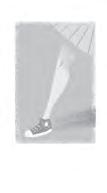Level
How are you? is a game for students at A2-B1 level of the European Framework of Reference for Languages. It represents a precious teaching tool for the group/class but it can also be used at home with friends. It is a team game.
Language aims
• Introduce or revise vocabulary related to the human body and health.

• Check knowledge of nutrition and daily healthy habits.
• Understand and follow simple physical exercises.
Components
How are you? includes:

• a playing board
• a numbered dice






• a dice with coloured faces (yellow, blue, orange, purple, red, green)
• 132 game cards divided in six categories

• an instruction booklet







Rules of the game
Put the playing board on a table, make the two dice and divide the cards according to the colours.
The youngest player starts the game by throwing the dice. Game play proceeds in a clockwise direction.
The opponent team leader takes a coloured card which corresponds to the colour shown on the dice:
• yellow card: the team leader, without showing the opponent team, shows the card to the active player who has to draw the illustrated item and the player’s team has to guess the item. Each team has three chances to guess the correct answer.
• green card: the player has to mime a state of health and the rest of the team has to guess. Each team has three chances to guess the correct answer.
• blue card: the opponent shows the card and the player whose turn it is has to say the word of the illustrated part of the body.


• orange card: the player has to answer a question with multiple choice answers.
• red card: the player has to answer true or false about a statement regarding health.












The playing board is a fun track with 100 spaces. On the spaces with pills, the player moves along the board.
On the stars, the player misses a turn.
On the exercise spaces, the player does a series of movements before continuing along the board.
To present or revise the vocabulary related to the human body, you can use the reverse side of the playing board and, with the use of post-it notes, ask the students to put the words in the correct place.
• purple card: an opponent player has to ask the active player what type of doctor cures a particular health problem.
With the exception of the blue cards, the correct answers are found on the cards in order to facilitate game play. For the answers to the blue cards the players can consult the instruction booklet where all of the words are illustrated.
If the answer is correct, the player throws the numbered dice and moves along the playing board. When a player lands on a space, the player has to follow the instruction.
If the answer is incorrect, the player doesn’t move along the board and play turns to the opponent team.
The first team to arrive at the finish space is the winner.
Other game ideas

1 Read and draw

The teacher or group leader shuffles the blue cards with parts of the human body, places them in a pile and divides the players into two opposing teams. The leader of team A takes a card without showing it to the other players. The player shows it to the leader of team B who has to draw on the board the part of the body indicated on the card. The players on team B try to guess the part of the body. If they guess correctly, the team wins the card. If they do not guess correctly, the card is placed at the bottom of the pile. The team that wins the most cards is the winner.
2 Memory
The teacher or group leader puts the yellow and green cards face down on the table. Players take turns to turn over two cards. If they match a remedy with a symptom, they win the two cards. If the cards do not match, the cards are put back on the table and players should try to remember the location. The teacher decides if the matching cards are correct.
3 The Why? game
The red cards with True/False answers provide the opportunity to find out more information: the teacher or group leader can encourage players to carry out research into topics which are common in daily life (nutrition, good and bad habits, new technology).
4 Role play at the A&E (Accident and Emergency)
The teacher or group leader forms pairs with the roles of doctorpatient The teacher or group leader writes several dialogues on the board which the players represent in class. The doctor chooses at random one or two cards with remedies. The patient chooses one card with a part of the body and one card with a symptom.
Here are some examples: The doctor
Good morning sir/madam, how are you?
Why are you here? / What is wrong?
What’s the matter? / What seems to be the problem?


What exactly is the matter? Where does it hurt?
Can you describe the symptoms?
So, I’ll write you a prescription. I’d like you to take…

You need to take… (x) times a day, (x) in the morning, (x) at lunch and (x) in the evening.
Take care of yourself. Get plenty of rest.
Have a nice day, goodbye!
Doctor, I’m very It’s very I don’t feel I’ve got I’ve been days.
Thank you, Goodbye, nice day.
Thank you, too!
Note: In English there are different ways to






- An ear, nose and throat specialist is also called









- A family doctor is also called a GP (general





- An eye specialist is also called an ophthalmologist.

